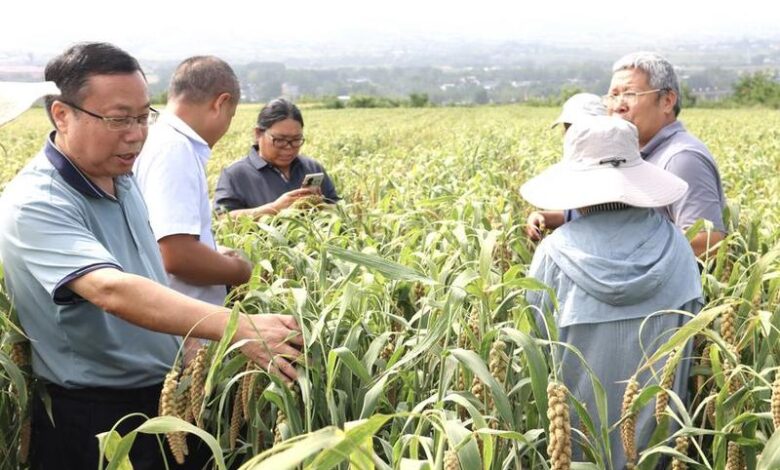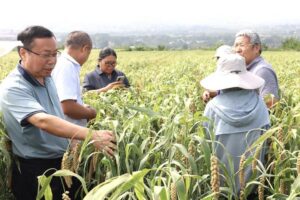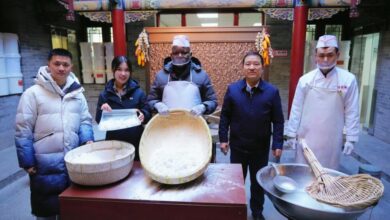

Chinese agricultural scientists have developed a new variety of foxtail millet, setting a summer yield record, with the breakthrough expected to provide strong support for boosting grain production and revitalizing the country’s millet industry.
The new foxtail millet variety, Zhonggu 25, was developed by researchers from the Institute of Crop Science (ICS) under the Chinese Academy of Agricultural Sciences, and cultivated in a demonstration field in central China’s Henan Province. A recent expert measurement recorded a yield of 625.92 kilograms per mu (about 9,389 kilograms per hectare), breaking China’s 2014 summer foxtail millet yield record per mu.
This new variety has achieved a record-breaking high yield, despite adverse weather conditions such as heavy rainfall and lack of sunlight this year. The success can be attributed to the superior traits of this millet variety, including lodging resistance, high productivity and excellent disease and stress tolerance, along with the use of optimized planting techniques that further enhanced its performance, according to experts.
This achievement lays the foundation for scientific breeding, the exploration of new cultivation techniques and further development of the millet industry, offering a model for increasing millet yields on a large scale, said Diao Xianmin, a researcher with the ICS and leading scientist of China’s millet and sorghum industry and technology system.
Foxtail millet is one of the oldest domesticated crops in the world and a staple crop in the formation of the Asian agricultural civilization and it held a dominant position in the Chinese agricultural system before the introduction of high-input agricultural practices like irrigation and chemical fertilizers. Moreover, because it is a crop that can grow across a wide range of environments, including arid lands, it has the potential to be important for food security under climate change, according to experts.
The new variety is suitable for spring planting in regions like Shanxi, Inner Mongolia, Liaoning and Jilin, and for summer planting in areas such as Henan, Hebei, Shandong and Beijing, Diao said.
(Xinhua)






